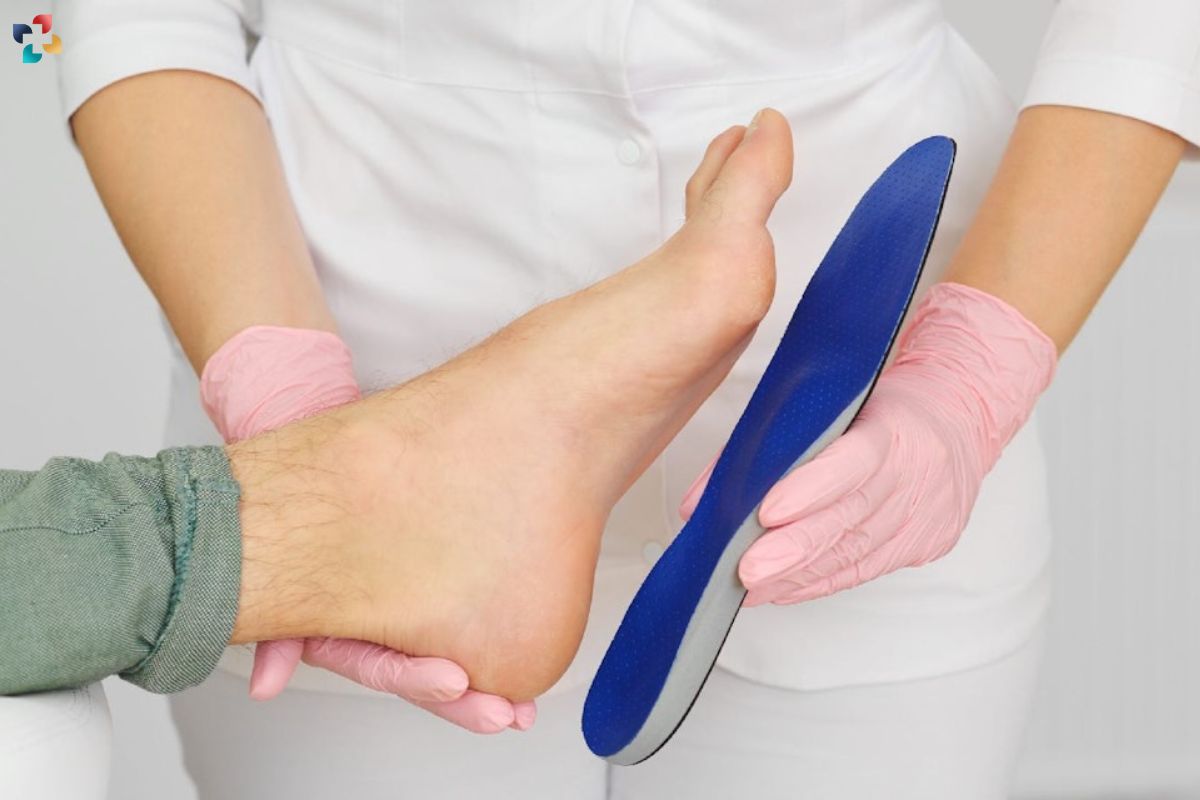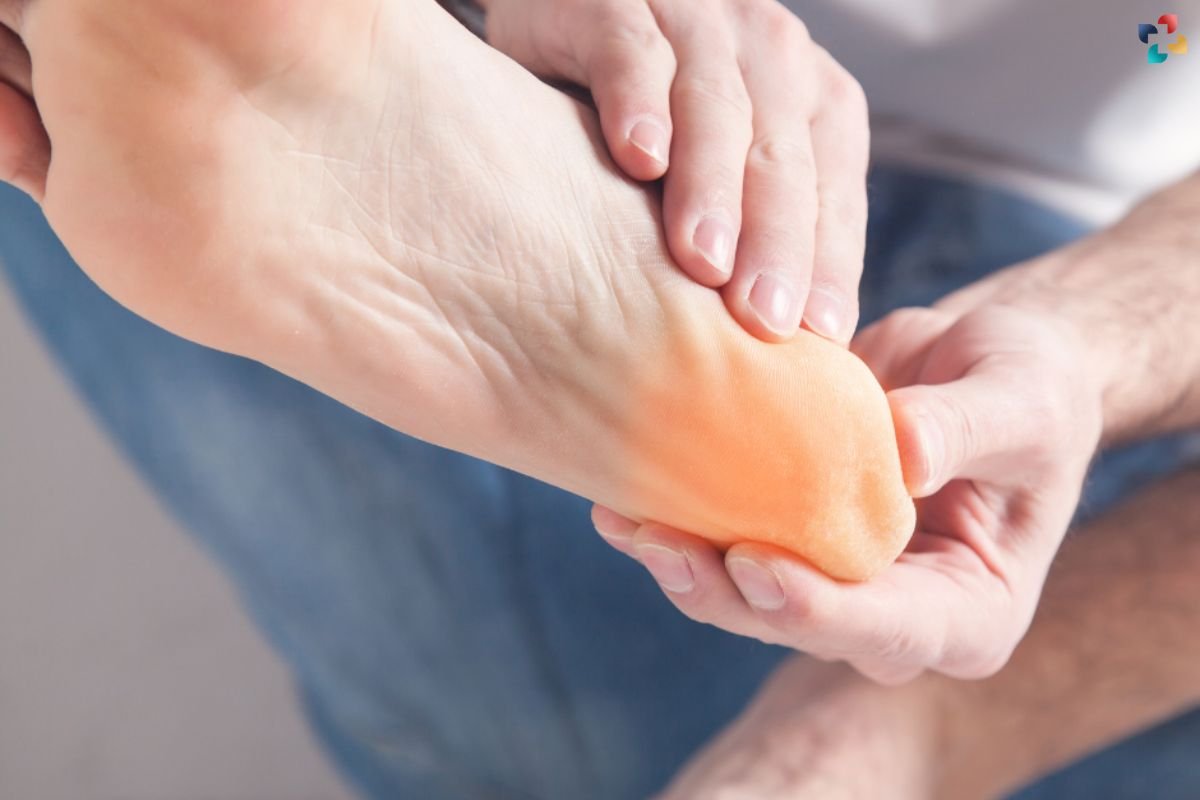Source – Your Next Step Podiatry
Bone spurs, also known as osteophytes, are bony projections that develop along the edges of bones. When they form on the feet, they can cause significant discomfort and mobility issues. Bone spurs on feet commonly occur in areas such as the heels, toes, and the top of the foot. This article provides a comprehensive overview of bone spurs on feet, including their causes, symptoms, treatment options, and prevention strategies.
What Are Bone Spurs on Feet?
Bone spurs on feet are extra bone growths that develop in response to pressure, rubbing, or stress over an extended period. These spurs are often the body’s way of protecting itself from friction or wear and tear on the bones and joints. While bone spurs can form on any bone, they are particularly problematic on the feet due to the stress these bones endure from walking, standing, and other daily activities.
Causes of Bone Spurs on Feet:
Several factors can contribute to the development of bone spurs on feet. Some of the most common causes include:
1. Aging
As we age, the cartilage that cushions the joints begins to wear down, leading to increased friction between bones. This wear and tear can stimulate the formation of bone spurs.
2. Osteoarthritis
Osteoarthritis is a degenerative joint disease that causes the breakdown of cartilage, leading to bone-on-bone contact. This condition is a significant risk factor for the development of bone spurs on feet.
3. Plantar Fasciitis
Plantar fasciitis is an inflammation of the plantar fascia, a thick band of tissue that runs across the bottom of the foot. Chronic inflammation can lead to the development of bone spurs on the heel.
4. Repetitive Stress and Overuse
Activities that put repetitive stress on the feet, such as running, jumping, or standing for long periods, can contribute to the formation of bone spurs. Athletes and individuals with physically demanding jobs are particularly at risk.
5. Foot Injuries

Injuries to the feet, such as fractures or sprains, can lead to abnormal bone growth as the body attempts to repair the damage.
6. Genetics
A family history of bone spurs or foot problems can increase the likelihood of developing bone spurs on feet.
7. Improper Footwear
Wearing shoes that do not provide adequate support or fit poorly can contribute to the development of bone spurs by causing excessive pressure on certain areas of the foot.
Symptoms of Bone Spurs on Feet:
Bone spurs on feet may not always cause symptoms, especially if they are small. However, when symptoms do occur, they can include:
1. Pain
Pain is the most common symptom of bone spurs on feet. The pain is often described as sharp or stabbing and can be felt in the affected area, such as the heel, toes, or top of the foot. The pain may worsen with activity and improve with rest.
2. Swelling and Inflammation
The area around the bone spur may become swollen and inflamed, particularly if the spur is irritating nearby tissues.
3. Stiffness
Bone spurs can cause stiffness in the affected joint, making it difficult to move the foot or toes freely.
4. Corns and Calluses
Bone spurs can lead to the formation of corns and calluses as a result of continuous friction between the spur and the skin.
5. Visible Bony Projections
In some cases, bone spurs on feet may be visible as lumps or bumps under the skin.
Diagnosing Bone Spurs on Feet:
If you experience persistent foot pain or other symptoms, it is essential to seek medical evaluation. A healthcare provider can diagnose bone spurs on feet through a combination of:
1. Physical Examination
A thorough physical examination of the foot can help identify areas of tenderness, swelling, and deformity. The healthcare provider may also assess your range of motion and gait.
2. Imaging Studies
Imaging studies such as X-rays, MRI (Magnetic Resonance Imaging), or CT (Computed Tomography) scans can provide detailed images of the bones and joints, confirming the presence of bone spurs and assessing their size and location.
3. Medical History
A detailed medical history, including information about your symptoms, lifestyle, and any previous foot injuries or conditions, can help in diagnosing bone spurs on feet.
Treatment Options for Bone Spurs on Feet:
Treatment for bone spurs on feet aims to relieve pain, reduce inflammation, and improve mobility. The appropriate treatment will depend on the severity of the symptoms and the underlying cause. Common treatment options include:
1. Rest and Activity Modification
Resting the affected foot and avoiding activities that exacerbate the pain can help reduce symptoms. Modifying your activities to decrease stress on the foot is also beneficial.
2. Ice Therapy
Applying ice packs to the affected area can help reduce pain and inflammation. Ice therapy is particularly effective after physical activity.
3. Medications
Over-the-counter pain relievers, such as ibuprofen or acetaminophen, can help manage pain and inflammation. In some cases, a healthcare provider may prescribe stronger medications or corticosteroid injections for more severe symptoms.
4. Orthotic Devices

Custom orthotic devices, such as shoe inserts or heel pads, can provide additional support and cushioning, reducing pressure on the bone spur and alleviating pain.
5. Physical Therapy
Physical therapy exercises can help improve flexibility, strength, and range of motion in the foot. A physical therapist can also recommend specific stretches and exercises to relieve pressure on the bone spur.
6. Surgery
In severe cases where conservative treatments are ineffective, surgery may be necessary to remove the bone spur and alleviate symptoms. Surgical options include removing the spur, repairing damaged tissues, or correcting underlying structural issues.
Preventing Bone Spurs on Feet:
While it may not be possible to prevent bone spurs entirely, certain measures can reduce the risk of developing them. These preventive strategies include:
1. Wearing Proper Footwear
Choose shoes that provide adequate support, cushioning, and a proper fit. Avoid high heels and shoes that cause pressure points or do not fit well.
2. Maintaining a Healthy Weight
Excess weight can put additional stress on the feet, increasing the risk of bone spurs. Maintaining a healthy weight through diet and exercise can help reduce this risk.
3. Regular Stretching and Strengthening Exercises
Incorporate stretching and strengthening exercises into your routine to improve flexibility and strength in the feet and lower limbs. This can help distribute pressure more evenly and reduce the risk of bone spurs.
4. Avoiding Repetitive Stress
Try to avoid activities that cause repetitive stress on the feet. If your job or hobbies require repetitive movements, take regular breaks and use protective equipment or orthotic devices as needed.
5. Managing Foot Conditions Promptly
Addressing foot conditions such as plantar fasciitis or flat feet promptly can help prevent the development of bone spurs. Consult a healthcare provider for appropriate treatment and management of any foot issues.
Living with Bone Spurs on Feet:
Living with bone spurs on feet can be challenging, but with the right management strategies, it is possible to maintain an active and pain-free lifestyle. Here are some tips for managing bone spurs:
1. Monitor Symptoms
Keep track of your symptoms and any changes in pain or discomfort. This can help you identify triggers and adjust your activities or treatments accordingly.
2. Stay Active
While it is important to avoid activities that exacerbate your symptoms, staying active with low-impact exercises such as swimming, cycling, or yoga can help maintain overall health and mobility.
3. Follow Treatment Plans

Adhere to the treatment plan prescribed by your healthcare provider, including medications, physical therapy, and orthotic devices. Consistent treatment can help manage symptoms and prevent worsening of the condition.
4. Seek Support
Joining a support group or talking to others with similar conditions can provide emotional support and practical advice for managing bone spurs on feet.
Conclusion
Bone spurs on feet are a common condition that can cause significant pain and discomfort. Understanding the causes, symptoms, treatment options, and preventive measures can help you manage this condition effectively. By taking proactive steps such as wearing proper footwear, maintaining a healthy weight, and addressing foot conditions promptly, you can reduce your risk of developing bone spurs on your feet and maintain an active, pain-free lifestyle.
If you experience persistent foot pain or suspect you have bone spurs on your feet, consult a healthcare provider for a thorough evaluation and appropriate treatment. With the right approach, it is possible to manage symptoms, improve mobility, and enhance your overall quality of life.

Understanding Peeling Feet: Causes, Treatments, and Prevention
In this comprehensive guide, we will explore the reasons behind peeling feet, discuss effective treatments, and provide preventive measures to help you maintain healthy, smooth feet.









